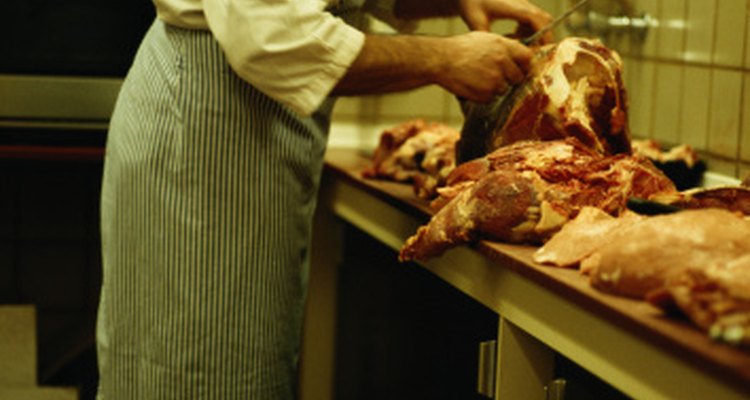
Beef is sold by quarters and halves to restaurants, co-ops and families to save money and give them control of the choice and size of the cuts. Each quarter has a hanging weight, the weight of the beef after it has been slaughtered and cleaned, between 150 lbs. and 170 lbs. of which about one-third is lost from cutting and trimming.
Roasts
Moderately marbled cuts used for slow cooked or braised pot roasts come from anterior section of the front shoulder quarter toward the head of the cow. These roasts include chuck, arm, shoulder, seven-bone, English and cross rib. When the roasts are cut into thinner pieces, they are called flat iron, book, butler, top chuck, chuck eye, blade, swiss and petit steaks.
Rib Cuts
Right behind the front roast-bearing section are the ribs, from which more tender cuts are butchered. Rib roast and rib eye roast come from this part, along with steaks such as rib eye, beauty, club, Delmonico, market and Spencer, all favored for their tenderness, intense beef flavor and texture.
Brisket and Shank
Directly underneath the section where the roasts are cut is the brisket, the massive chest muscle of the cow that weighs between 10 lbs. and 15 lbs.. This cut must be slowly roasted for eight to 10 hours in a low temperature oven or in a wood, charcoal or gas smoker to tenderize the muscles and break down the connective tissues. The front quarter shank is cut from the front of the cow’s legs, right under the brisket, and also requires slow and low cooking to make it palatable.
Plate Cuts
Underneath the ribs is the beef’s plate section. The meat from here is flavorful, inexpensive and, if properly cut against the grain and quickly cooked, fork tender. The skirt and hanger steaks cut from the plate are preferred for fajitas and also sold as Philadelphia, butcher’s and jiffy steaks.
Alternate Cuts
While these are the traditional cuts from a front quarter of beef, a butcher can alter the selection based on customer requests. Roasts can be cut into beef stew size pieces, rib roasts can be left intact if steaks are undesirable and chuck and other less tender pieces can be ground into hamburger with the fat content at the discretion of the consumer. Briskets are frequently cut in halves or thirds to accommodate standard family dinner requirements of 3 lb. to 4 lb. roasts.
Related Articles
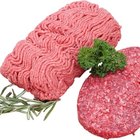
What Cuts of Meat Are Used for Ground ...

Does a Rib Eye Have a Filet in It?

Different Cuts of Steak
What Cuts of Beef Come From a Hind?

What Is Sirloin Roast?

What Is a Chateau Cut?
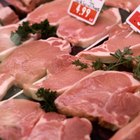
Types of Pork Chops
Difference Between Ribeye Steak & ...

Do Filet Mignon Steaks Come From Female ...
How to Cook Buffalo Fillet

Meat Parts of a Lamb

How to Cook Angus Beef Steak

How to Cook Kobe Steaks

Which Cuts of Meat Come From the Front ...

How to Marinate a Top Round Roast

What Is the Difference Between a Prime ...
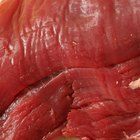
How to Trim and Tie a Beef Tenderloin

What Part of Beef Is Kosher?

What Cuts of Meat Can I Get From Deer ...
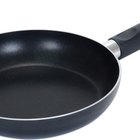
How to Cook Beef Top Round Pot Roast
References
Writer Bio
Cassie Damewood has been a writer and editor since 1985. She writes about food and cooking for various websites, including My Great Recipes, and serves as the copy editor for "Food Loves Beer" magazine. Damewood completed a Bachelor of Arts in English with an emphasis in creative writing at Miami University.
Photo Credits
Ryan McVay/Photodisc/Getty Images